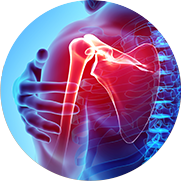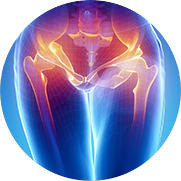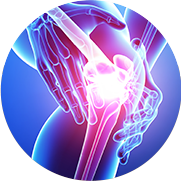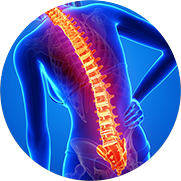Numbness and tingling?
It may not be Carpal Tunnel syndrome (CTS).
Although carpal tunnel syndrome is common, it is not the only cause of numbness, tingling, and pain in the forearm and hand. Most of the lay public and some of the medical community are not aware of other causes, so numbness, tingling and pain may be mistakenly thought to be coming from carpal tunnel syndrome (go to the CTS section of this website). These symptoms can be caused by many other conditions.
Local pressure on a nerve (“compression neuropathy”) causes numbness in distinct patterns that follow the area supplied by that nerve (see diagrams). Also, the muscles that are controlled by the compressed nerve may exhibit weakness, wasting, or twitching. The pressure may come from injury, thickened muscles, bands of connective tissue, enlarged blood vessels, ganglion cysts, or arthritic spurs. Ulnar nerve compression at the wrist causes numbness and tingling of the little finger, part of the ring finger, and the little finger side (ulnar side) of the palm. Ulnar nerve compression at the elbow causes not only the numbness noted above, but also numbness on the back of the ulnar side of the hand. Pressure on the radial nerve in the forearm or above the wrist can cause numbness over the back of the thumb, the index finger, and the web between these two digits. If the median nerve is compressed at or just below the elbow, numbness is felt not only in the same area as in CTS but also over the palm at the base of the thumb. Compression neuropathies may require surgery to release pressure on the nerve(s) to get relief.
Nerves in the hands and forearm have their roots in the neck. Pressure on nerves in the neck (C6-T1) can be caused by numerous conditions. Arthritis may cause bone spurs or narrowing of the spinal canal, causing pressure on nerves, or degenerating discs may press directly on the nerves at the spinal column or as they leave the spinal column and pass to the upper limbs. Diseases, infections, tumors, blood vessels abnormalities, and other conditions of the spinal cord itself, in the neck, can cause pressure on the cord, which may result in numbness, tingling, or aching in the arm, forearm or hand. Weakness and/or wasting of muscles supplied by that nerve may be found. Decreased reflexes in the arm and forearm may also result from pressure on certain specific nerves in the neck. The pattern or zone of the numbness is often very distinct for each nerve root affected.
Sometimes, a nerve may suffer from pressure at more than one area. For example, a nerve may be compressed in the neck, and then again further down the arm, for example at the wrist. This is called “double crush”. When a nerve suffers from pressure at one level, it may be more susceptible to problems from pressure at another level.
Numbness and tingling can be caused by diseases of the central nervous system. Multiple sclerosis, stroke, and other disorders of the brain and spinal cord may sometimes cause numbness in the forearm and hand.
Other diseases can affect the nerves in the upper limb, causing numbness, tingling, burning. If the symptoms are more diffuse, that is, in the hands and forearms (and in the legs and feet), the cause may be a condition called “peripheral neuropathy”. The pattern of numbness is not usually that of one nerve, but instead may be generalized, like the pattern of a glove. There may or may not be pain and the numbness is often constant. Diabetes, alcoholism, and old age are common known causes of neuropathy. Poisoning from metals and industrial compounds are also possible causes.
Certain medications, such as cancer treatment drugs, are known to cause numbness and tingling in the hands. Some of these cause temporary numbness that resolves after completion of the chemotherapy treatment. Others may cause permanent numbness. Nutritional deficiencies, such as vitamin B1 deficiency, may result in numbness and tingling.
The pattern and distribution of numbness, tingling, burning, dullness, and muscle changes help to determine if the source is pressure on a nerve at a particular level (e.g. neck, wrist, elbow), disease, medication, nutritional, or other conditions. Depending on the suspected cause, further testing, such as X-ray, MRI, nerve tests (such as EMG), or blood tests may be used to help confirm a diagnosis, and specific treatment recommendations can then be made.
(c) 2007 American Society for Surgery of the Hand. Developed by the ASSH Public Education Committee











